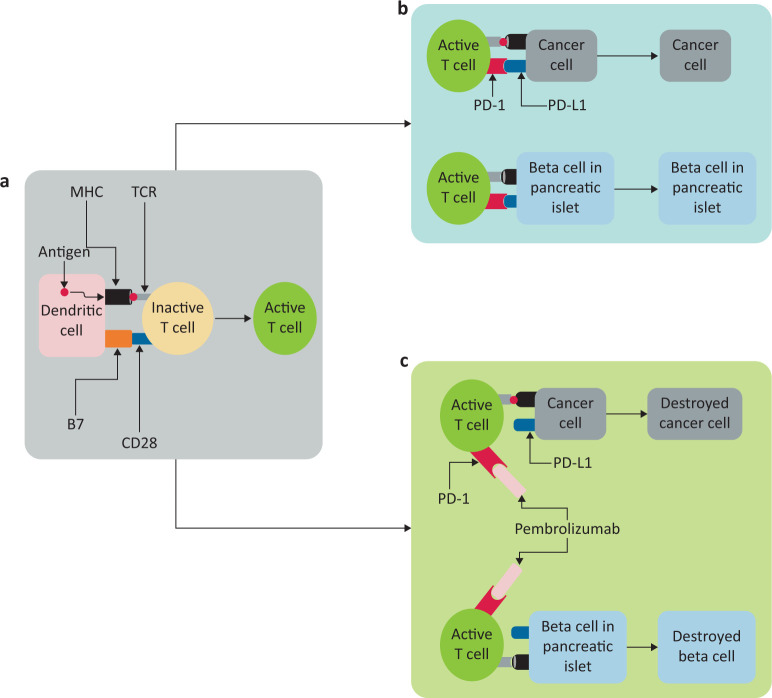Fig 1.
Schematic representation of immune checkpoints and mechanism of action of pembrolizumab. a) Dendritic cells present antigen via histocompatibility complex (MHC) molecules which interact with T-cell receptors (TCR). Simultaneous interaction between B7 and CD28 results in activation of T cells. b) In the absence of a programmed cell death protein-1 (PD-1) checkpoint receptor blocker, there is an interaction between PD-1 and programmed cell death protein ligand 1 (PD-L1) which prevents T cell action on the cell. c) Pembrolizumab, a PD-1 receptor blocker, prevents the cancer cell-expressed PD-L1 from binding to the PD-1 receptor. This enables T cells to act on the antigen presented through MHC and destroy the cell. Unfortunately, the beta cells in the pancreas undergo the same process of destruction as an adverse effect.

